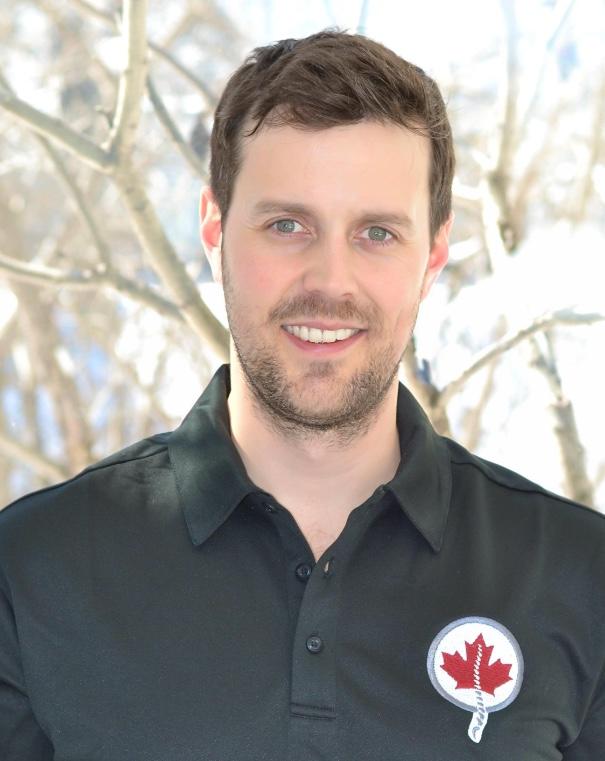Learn how Pr. Graham and his team are translating biomechanics and AI into real-world solutions—read the full interview below to discover the research driving this groundbreaking collaboration.
- Can you briefly describe your research focus at Celestra Health?
The focus of our research is to develop methods for objectively analyzing the walking patterns of individuals with neurological diseases (e.g., multiple sclerosis, Parkinson’s disease) in their natural environment using wearable technology. In doing so, we will enhance clinicians’ abilities to longitudinally monitor disease progression (i.e., improvement, maintenance, worsening) and understand how their patient responds to interventions (e.g., exercise, assistive devices, pharmacological).
I, along with my team of postdoctoral fellows (Matthew Mavor [team lead], Mohammadhossein Akhavanfar, Kristen Beange, Danilo Catelli, Victor Chan) and graduate students (Alexandre Mir-Orefice [PhD student], Emilie Kuepper [MSc student]), have developed logic- and AI-based algorithms based on data from smart shoe insoles (pressure, accelerometer, gyroscope) to identify ambulatory activities (i.e., standing, walking, turning, stair navigation), analyze these activities on par with a motion capture laboratory, and produce an intuitive movement-quality score measured from 0% to 100%.
- Why is this research important? Who does it help?
Walking quality is regarded as the most important aspect of quality of life among people with neurodegenerative diseases and is considered a strong biomarker for disease progression. Typically, during (semi-)annual clinical visits, gross walking quality is quantified by measuring the distance travelled over a set amount of time (e.g., six-minute walk test) or the time to walk a set distance (e.g., timed 25-foot walk), which is supplemented by visual observations and rigorous note-taking.
Although the results of these tests are strongly related to disease progression, they rely on a minimal detectable change between visits / baseline measures to be considered meaningful, indicating that an irreversible change in gait quality has occurred, which the clinician must now react to. Further, the human walking pattern hosts a wealth of information that cannot be seen by human observers — for example, the time spent with one or two feet on the ground, stride length, variability and asymmetry, among many others.
It is this underlying objective information that is key to identifying disease progression and can be used to differentiate people from control populations even at low disease levels. However, until very recently, the technology needed to capture these measures was largely limited to specialized motion capture laboratories like those at uOttawa.
The solution my team developed puts the motion capture laboratory in the patient’s shoes. Rather than measuring time and distance at (semi-)annual clinical visits to get a “snapshot” of a person’s gross walking quality, we can perform fine-grained walking analyses several times a week in a natural environment. For persons with neurological conditions, this means that their clinician will have access to a tremendous amount of high-quality walking samples, which are distilled to a single value to quickly identify trends and make objective decisions that benefit the patient. Of course, underlying metrics are available for those who wish to dig deeper.
Beyond this, barriers to health care will be lowered for all patients, but especially those living in more rural settings where motion capture does not exist, and all patients can use the data they generate to advocate for their health care.
- How did this collaboration between Celestra Health and uOttawa come together?
Several years ago, I received an email from Celestra Health CEO Bruce Ford explaining his vision for the company and the underlying solution: an unobtrusive at-home gait monitoring system. We had an initial discussion and have been working closely together ever since.
- What are the benefits of your academic–industry collaboration that you would like to share with your uOttawa colleagues?
This collaboration has been an excellent opportunity to take our biomechanics, wearable sensors and machine learning expertise to solve a real-world problem to help patients with neurological conditions.
This academic–industry collaboration has also provided excellent training opportunities for our team members, as they are actively involved in patent submissions, business decisions and the development of commercial-grade software. Working together with world-class software developers and business leaders has been an invaluable experience for all members of our team. Canada also has a lot of excellent funding programs for these partnerships, and we have been very lucky to grow our team and research through funding from Mitacs and the Ontario Centre of Innovation.
- What’s next for the project — or where can people learn more?
Although we have made great strides, there is still much work to be done. While we can confidently measure key metrics during straight-line walking, many other ambulatory activities provide invaluable information related to disease progression. Namely, our team is working on objectively analyzing turning, standing balance, jumping and stair navigation. Further, we are working towards fatigability measures as a marker of disease progression, and identifying stereotypical walking patterns, which can help clinicians identify where lesions are in the brain.
We are currently involved in multiple clinical trials in four countries (Canada, USA, UK, Germany) with over 100 patients actively using our solution, with more underway. To disseminate our findings, we are writing several research articles. Our initial validation paper has been posted as a preprint while we traverse the peer-review process. Readers can also learn more at Celestra Haelth's website.
From the lab to the living room, this project is a powerful reminder of how innovation thrives at the intersection of science, technology, and collaboration. With each new data point collected by a patient’s step, we’re walking closer to earlier interventions, better outcomes, and a more accessible future for healthcare.

“This academic-industry collaboration has provided excellent training opportunities… Our students are actively involved in patent submissions, business decisions, and commercial-grade software.”
Associate Professor, Faculty of Health Sciences
